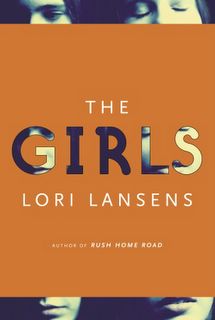"I have never looked into my sister's eyes. I have never bathed alone. I have never stood in the grass at night and raised my arms to a beguiling moon. I've never used an airplane bathroom. Or worn a hat. Or been kissed like that. I've never driven a car. Or slept through the night. Never a private talk. Or solo walk. I've never climbed a tree. Or faded into a crowd. So many things I've never done, but oh, how I've been loved. And, if such things were to be, I'd live a thousand lives as me, to be loved so exponentially."
So begins Lori Lansens's new novel, "The Girls" where the protagonists, Ruby and Rosie are conjoined twins, but more accurately, craniopagus twins because they are joined 'by a spot the size of a bread plate on the sides of their twin heads". Abandoned by their frightened teenage mother, they are adopted by the eccentric nurse who attended their birth, and her husband, a gentle immigrant butcher.
Although as conjoined twins they are destined to spend every moment of the day together, their personalities could not have been more different. Rosie enjoys sports and imagines herself quite the literary buff, while Ruby is a girlie-girl and enjoys being a couch potato, parking herself infront of the idiot box. It appears almost as if the twins took pains to be different in order to retain some sense of individuality. As the author pointed out in an interview:
"...it's like the struggle for individuality is so profound and intense for conjoined twins because they're often perceived and treated as one person. They must struggle so fiercely that they choose different personalities..."
Physically, Ruby seems to have come out the winner in the looks department with a fair and flawless complexion a and deep cleft in her chin which people find irresistable, but she has weak limbs and is unable to walk and Rosie, the sturdier of the two, carries her around on her hip much like one would carry a little baby or a doll.
..."Ruby is my sister. And strangely, undeniably, my child..."
As a result of having to carry Ruby around, Rosie, who had symmetrical limbs when she was born, now displays a right leg which is a full three inches shorter than her left, her spine is compressed and her hip is crooked. The strain on her body is constant as she struggles to bear the growing sister's weight, but, as a conjoined twin who cannot be separated because they share a common blood supply, she has to bear it and she does so uncomplainingly.
"...there is some discomfort in our conjoinment. Ruby and I experience mild to severe neck, jaw and shoulder pain, for which we take physiotherapy three times a week. The strain on my body is constant, as I bear Ruby's weight, as I tote Ruby on my hip, as I struggle to turn Ruby over in our bed or perch on my stool beside the toilet for what seems like hours. (Ruby has a multitude of bowel and urinary tract problems). We are challenged, certainly and uncomfortable, sometimes, but neither Ruby nor I would describe our conjoinment as painful..."
Because of how their heads are fused the twins have never really set eyes on each other, except in mirror images and photographs, ofcourse, but yet they know each other's gestures as their own, through the movement of their muscles and bone. They love each other as they love themselves and hate that way, too!
When the book opens, the twins are almost thirty, and are the oldest living craniopagus twins in history. Since Rosie has a passion for reading and writing, she decides on a project: to write her autobiography on her life as a conjoined twin, but Ruby insists that because they are joined together the story cannot be that of Rosie only and that she HAS to be included which results in her writing some of the chapters, giving her unique perspective to their story. What results is a wonderful tale of two little girls fighting to live a normal life under highly extraordinary circumstances.
The subject of conjoined twins has been explored in literature before. Perhaps some of the most well-known among the books are, Edward Carey's novel, Alva and Irva which documents one sister's struggle to draw her twin out into the world, enticing her with a tiny model of their hometown and Ken Follett's thriller novel, "The Third Twin", published in 1997. In that novel, the protagonist must come to terms with whether his actions are determined by his shared DNA, or if his separate upbringing is responsible for his identity.
For more information about conjoined twins in general visit,http://zygote.swarthmore.edu/cleave4b.html


